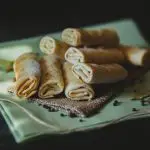Looking for the best satin fabric? Wondering which type is right for you? In this article, we’ll explore different types of satin fabric and help you make an informed decision.
From the pros and cons of polyester satin to the benefits of silk satin, we’ll cover it all.
We’ll also delve into acetate satin and rayon satin, and compare satin weaves like crepe and charmeuse.
So, get ready to discover the perfect satin fabric for your needs!
Table of Contents
Different Types of Satin Fabric
There’s a wide range of satin fabric types available in the market. Satin is known for its smooth and glossy surface, which is achieved through a unique weaving technique. The most common types of satin weaves include satin, charmeuse, crepe-back satin, and duchess satin.
Satin weave is characterized by its floating threads on the surface, which create a lustrous and luxurious appearance. It is commonly used in formal attire and luxurious bedding.
Charmeuse, on the other hand, is a lightweight and drapey satin fabric with a matte finish on one side and a shiny finish on the other. It is often used in lingerie and evening gowns.
Crepe-back satin is a combination of satin and crepe weaves, resulting in a fabric with a smooth satin front and a textured crepe back. This type of satin fabric is popular for its versatility and is often used in both casual and formal wear.
Lastly, duchess satin is a heavyweight satin with a high thread count, making it ideal for structured garments and bridal wear. It has a subtle sheen and is known for its durability and elegance.
In terms of satin fabric finishes, there are various options available such as matte satin, glossy satin, and hammered satin. These finishes determine the overall appearance and texture of the fabric, allowing for customization based on individual preferences.
Factors to Consider When Choosing Satin Fabric
When choosing satin fabric, it’s important to consider various factors. Satin is a versatile and luxurious fabric that can be used for a variety of purposes, from clothing to home decor. To ensure you make the right choice, here are five key factors to consider:
-
Fabric Weight: Satin comes in different weights, ranging from lightweight to heavyweight. Consider the purpose of your project and choose a weight that suits it best.
-
Fiber Content: Satin can be made from various fibers, including silk, polyester, and acetate. Each fiber has its own unique qualities, so consider the level of sheen, durability, and care instructions.
-
Color and Print: Satin fabric comes in a wide array of colors and prints. Consider the aesthetic you want to achieve and choose a color or print that complements your project.
-
Drapability: Satin is known for its elegant drape. Consider how you want the fabric to hang and flow, and choose a satin with the appropriate level of drapability.
-
Cost: Satin fabric can vary in price. Consider your budget and the quality you desire, and choose a satin fabric that meets your needs.
Pros and Cons of Polyester Satin
To determine if polyester satin is the right choice for you, consider the pros and cons of this fabric option.
Polyester satin has its advantages, such as its affordability and ease of care. It is a synthetic fabric that is durable and resistant to wrinkles, making it ideal for garments that require frequent washing and wearing. Polyester satin also has a smooth and shiny finish that adds a touch of elegance to any outfit.
However, there are some drawbacks to consider. Polyester is derived from petroleum, a non-renewable resource, making it less sustainable compared to natural fabrics. It is also less breathable than natural fibers, which can lead to discomfort in hot weather.
If you are looking for more sustainable alternatives to polyester satin, consider fabrics like organic cotton satin, silk satin, or Tencel satin. These fabrics are made from natural materials and are more environmentally friendly. Additionally, they offer similar benefits in terms of softness and luster.
Ultimately, the choice between polyester satin and its sustainable alternatives depends on your personal preferences and values.
Benefits of Silk Satin
If you’re looking for a luxurious and smooth fabric option, silk satin offers a beautiful drape and a natural sheen. Silk satin is highly valued for its numerous benefits and versatile uses.
Firstly, one of the key benefits of silk satin is its exceptional softness and comfort. The natural fibers of silk make it incredibly gentle on the skin, making it an ideal choice for clothing and bedding items.
Additionally, silk satin is known for its breathability, allowing air to circulate and keeping you cool in warmer weather. Another advantage of silk satin is its durability. Silk fibers are incredibly strong and resilient, ensuring that your silk satin garments and accessories will last for a long time with proper care.
Furthermore, silk satin has a lustrous appearance that adds an elegant touch to any outfit or interior decor. Its versatility allows it to be used in various applications, such as luxurious nightwear, bridal gowns, draperies, and upholstery.
Exploring Acetate Satin
Acetate satin, with its smooth texture and glossy finish, is a popular choice for elegant and glamorous clothing items. It offers several advantages that make it a favorable alternative to silk satin.
One of the main advantages of acetate satin is its affordability. Compared to silk satin, which can be quite expensive, acetate satin provides a more budget-friendly option without compromising on style. Additionally, acetate satin is known for its durability and resistance to wrinkling, making it a practical choice for clothing that requires regular wear and washing.
Another advantage of acetate satin is its versatility in terms of color and pattern options. This fabric can be easily dyed and printed, allowing for a wide range of design possibilities.
In comparison to silk satin, acetate satin may not have the same luxurious feel and natural sheen. Silk satin is known for its softness and elegance, and it has a more breathable quality, making it suitable for warmer climates.
However, acetate satin offers a more affordable, durable, and versatile alternative, making it a popular choice for those seeking an elegant and glamorous look without breaking the bank.
Rayon Satin: A Versatile Option
When choosing a fabric for your elegant and glamorous clothing items, consider rayon satin as a versatile option.
Rayon satin is known for its luxurious feel and elegant drape, making it a popular choice for evening gowns, blouses, and other formal wear.
One of the main advantages of rayon satin is its versatility. It can be dyed in a wide range of vibrant colors and can even mimic the look and feel of silk satin at a more affordable price.
Additionally, rayon satin is known for its excellent draping qualities, allowing it to flow beautifully over the body and create a flattering silhouette.
Another advantage of rayon satin is its durability. It is a strong and resilient fabric that can withstand frequent wear and washing without losing its shape or shine.
Furthermore, rayon satin is relatively easy to care for. It can be machine washed on a gentle cycle and only requires a low heat setting for ironing.
Overall, rayon satin offers a combination of elegance, versatility, and durability, making it an excellent choice for your elegant and glamorous clothing items.
Comparing Satin Weaves: Crepe Vs Charmeuse
When it comes to satin fabrics, understanding the differences between crepe and charmeuse weaves is crucial.
Crepe satin has a textured, crinkled appearance, while charmeuse satin is smooth and shiny.
Each weave offers unique qualities, such as crepe’s durability and charmeuse’s drape, making it important to choose the right satin fabric for your project.
Weave Differences: Crepe Vs. Charmeuse
The main difference between crepe and charmeuse satin fabrics is how they are woven.
-
Crepe satin has a crinkled appearance due to its unique weaving technique, which gives it a textured feel and a matte finish.
-
Charmeuse satin, on the other hand, has a smoother and more lustrous surface. It is woven with a satin weave, where the warp threads float over several weft threads, resulting in a shiny and silky fabric.
When it comes to comparing crepe satin to sateen, the key difference lies in the fabric composition. While crepe satin is made from silk or synthetic fibers, sateen is typically made from cotton. Sateen has a softer feel and a slight sheen, making it a popular choice for bedding and apparel.
Lastly, satin and velvet may seem similar due to their luxurious appearance, but they are different in terms of texture and construction. Velvet is a woven fabric with a dense pile, while satin is a smooth fabric with a glossy finish.
Satin Fabric Qualities
Now that you understand the differences between crepe and charmeuse satin weaves, let’s dive into the qualities of satin fabric.
Satin is known for its luxurious and smooth texture, making it a popular choice for clothing and bedding. But what about its durability? Satin fabric is actually quite durable, as long as you take proper care of it.
Avoid exposing satin to excessive heat or harsh chemicals, as they can weaken the fabric over time. Instead, opt for gentle hand washing or using the delicate cycle on your washing machine. It’s also a good idea to air dry satin rather than using a dryer, as the heat can cause shrinkage and damage.
Choosing the Right Satin
To choose the right satin for you, consider the specific qualities and colors that suit your personal style and preferences. Satin fabric is known for its smooth, lustrous appearance and soft, luxurious feel. It is made from a variety of fibers such as silk, polyester, or rayon, each with its own characteristics.
When choosing satin fabric, keep in mind the following:
-
Fabric Characteristics:
-
Look for a satin fabric with a high thread count for durability and longevity.
-
Consider the weight and thickness of the fabric, as heavier satin may be more suitable for certain applications.
-
Fabric Care:
-
Satin requires delicate handling and should be hand-washed or dry-cleaned to maintain its sheen and integrity.
-
Avoid using harsh detergents or bleach that can damage the fabric.
-
Hang satin garments to dry or lay them flat to prevent stretching or distortion.
Conclusion
In conclusion, when it comes to choosing the best satin fabric, it ultimately depends on your personal preferences and needs.
Polyester satin offers affordability and durability, but lacks the luxurious feel of silk satin.
Silk satin, on the other hand, provides a luxurious and smooth texture, but comes at a higher price point.
Acetate satin is a great alternative for those on a budget, while rayon satin offers versatility in terms of drape and sheen.
Ultimately, the decision comes down to your specific requirements and desired aesthetic.
- Tetron Fabric for Sportswear: Performance and Comfort - June 17, 2025
- Tetron Fabric for Accessories: Design and Usage Tips - June 17, 2025
- Tetron Fabric for Footwear: Style and Durability Guide - June 17, 2025



